Have you heard of or watched the popular Japanese anime movie: Your Name (Kimi no Nawa)? If so, you would recall that the main heroine, Mitsuha, worked as a miko — a Shinto shrine maiden — and that was absolutely one of the many parts of the movie that captured my fancy. After all, when I saw her perform kaguramai (a Shinto ritual ceremonial dance with bells and chimes) as a miko in one of the movie’s scenes, I was utterly enthralled.
The profession instantly got me curious and I was glad when I found out that as a visitor, I could head over to Hyogo Prefecture’s Amagasaki Ebisu Shrine in Amagasaki City of Japan (near Osaka) to sign up for a miko experience package to try and rent their attire for a day — and so, I did!
For a day (or technically, an hour) I did not only learn about the profession but I also got to try being a miko, and you bet that was such an enriching and fun affair!
Where to Stay in Osaka…?
Come and check out my list of the ‘Best Hotels in Osaka‘ which features the top recommended choices for cheap to luxurious accommodation choices.
Top photo by: Shutterstock
Miko Experienc
Photo by: Shutterstock
» What is a miko?
A miko (巫女) in Japan is a shrine maiden that is trained to perform certain rituals and tasks in order to support Shinto priest(s) in a traditional shrine. They are not be mistaken as fortunetellers or mediums, and as per the fact that they are ‘maidens’, miko must be unmarried females (oftentimes they are priests’ daughters).
» What is Shinto?
Shinto or kami-no-michi is a polytheistic religion in Japan that primarily revolves around the veneration of many deities known as kami (gods or spirits) or supernatural entities that are believed to inhabit all things. Today, Shinto remains to be the country’s major religion alongside Buddhism with Shinto shrines being the places of worship and homes of kami.
» How did the miko experience come about in Amagasaki Ebisu Shrine?
Back in 2016, the Amagasaki Hospitality Group proposed this idea to the head priest of Amagasaki Ebisu Shrine, Nobuyo Otagaki, and since then, the program was established as a way for tourists to further understand Japanese culture.
TRIVIA: The Shrine is dedicated to Ebisu, a kami or deity of luck and prosperity, and he is one of the 7 Gods of Fortune. With its location, it’s also a prime choice for being one of the fun day trips from Osaka that you can do!
» What does that 1-hour miko experience entail?
– Shinto shrine and miko lesson by a guide
– Try a suzu or Shinto bell and have a glimpse of the kaguramai dance
– A chance to dress up in a miko attire and take photos around the shrine
It helps to note that a Miko’s traditional attire is a red hakama (long trouser-like skirt tied with a bow), a white kosode (kimono robe), and some white or red hair ribbons. In Shintoism, the color white symbolizes purity, and the garment placed over the kosode during kaguramai or kagura dances is called a chihaya (as pictured above).
.
Please remember by the way, that this is not a cosplaying event as it is more of an experience to garner further understanding of Shinto faith or the miko profession.
• • •
Ama Travel Guide
» Address
Where is Amagasaki Ebisu Shrine?
Address: 3-82 Kanda Nakadori, Amagasaki 660-0884 in Hyogo Prefecture
In Japanese: 〒660-0884 Hyogo, Amagasaki, 神田中通 3丁目 82
Operation hours: Monday to Friday from 10AM to 5PM
– – –
» How to book and rent a miko attire
You only need to book online a day in advance and that’s it!
- Go to this inquiry page and fill the form with details of your name, mobile number, desired date, time, and number of participants (minimum of 2). You can fill the form in English or Japanese.
- Participants must be female for the miko or shrine maiden program; however, accompanying males can wear a Japanese happi or traditional straight-sleeved coat with no charge.
- Your reservation is confirmed when you receive a response by email, and this email acts as your proof of reservation.
- Cancellations can be done via email or phone at least 24 hours before.
- If you stay more than 1 hour, there will be an excess charge.
- Due to the fact that it is a busy season, the shrine does not offer this miko experience from November to February. However, it is still possible to make an inquiry for your date in case the shrine can accommodate your request.
– – –
» How much is the miko experience
As of 2020, it only costs ¥2,000 per person to undergo the 1-hour program.
– – –
» How to get to Amagasaki Ebisu Shrine
Just head over to Amagasaki Station. For this, it is best to buy a Hanshin Tourist Pass. From there, it’s only a 4-minute walk to the shrine.
What is the Hanshin Pass? It’s a 1-day train pass that grants you unlimited rides on the Hanshin-serviced train lines around places like Osaka and Kobe — including the Hanshin Line that passes through Amagasaki (cost: ¥500).
OTHER TYPE: You can also try the 1 day or 2-day Hankyu Pass for unlimited travel in Kyoto, Osaka and Kobe. (Cost: ¥700 for 1 day / ¥1,200 for 2-day)
If you need help when riding the trains, just use the directions feature in Google Maps — I find this as a very helpful tool if I want to reach a certain place from a particular location. However, take note that Google Maps doesn’t work offline if you want routes or transportation schedules, so I recommend that you get a pocket WiFi or a SIM Card to stay connected online).
– – –
» Visa for Japan
If you’re NOT a citizen of any of Japan’s exempted countries, you are then required to avail of a visa beforehand. (If you’re from the Philippines, you can read my guide on how to get a Japan visa in Manila here.)
- Check full visa requirements here as per your nationality.
– – –
» Safety in Japan
Japan is one of the safest countries in the world with very low crime rates. I have been traveling solo to this country many times now and I have never felt unsafe even in the late hours of the night — however, this is NO excuse to get too complacent. ‘Little crime’ does not mean ‘no crime’, so stay vigilant and be “street smart” by using your common sense at all times.
Nevertheless, the Japanese people are one of the kindest and most respectful people I have ever met, so solo travelers don’t have much to worry in this amazing country.
– – –
» Helpful Japanese Phrases
Japan may be one of the most developed countries in the world, but a lot of the locals don’t speak English. However, this should not discourage you from traveling to this country because apart from the fact that there are a lot of translation apps that will help you understand and speak Japanese, a lot of the locals are also making the effort to learn and use the English language.
- RELATED READ: Best translation apps for travel
Anyhow, below are some helpful Japanese phrases that will help you along the way! And even if you do encounter a Japanese who can speak English, it doesn’t hurt to say a word or two in their language.
Hello: Konnichiwa (Kohn-nee-chee-wah)
Thank you (normal): Arigatō. (Ah-REE-gah-tohh)
Thank you (less formal): Arigatō gozaimas (Ah-REE-gah-tohh goh-zahy-mahs)
Thank you (informal): Dōmo (DOHH-moh)
Yes: Hai (Hai)
No: Iie (E-eh)
Goodbye (long term): Sayōnara (Sah-yohh-nah-rah)
Goodbye (informal): Ja ne (Jahh neh)
Excuse me: Sumimasen (Soo-mee-mah-SEN)
I’m sorry: Gomen nasai (Goh-men-nah-sahy)
Is there someone here who speaks English?: Dareka eigo ga hanasemasu ka? (Dah-reh-kah ey-goh gah hah-nah-seh-mahs kah?)
Help!: Tasukete! (Tahs-keh-teh!)
Cheers!: Kanpai! (Kan-pie!)
• • •
» Top Kansai Tours «
Kyoto & Nara Tour
Staple trip to do in Kansai!
Kimono Rental
Try Japan’s traditional clothing in Kyoto!
• • •
Overall
You’ve probably already done a kimono rental before, so why not give a miko experience a try? As you can see, it’s surely going to be memorable!

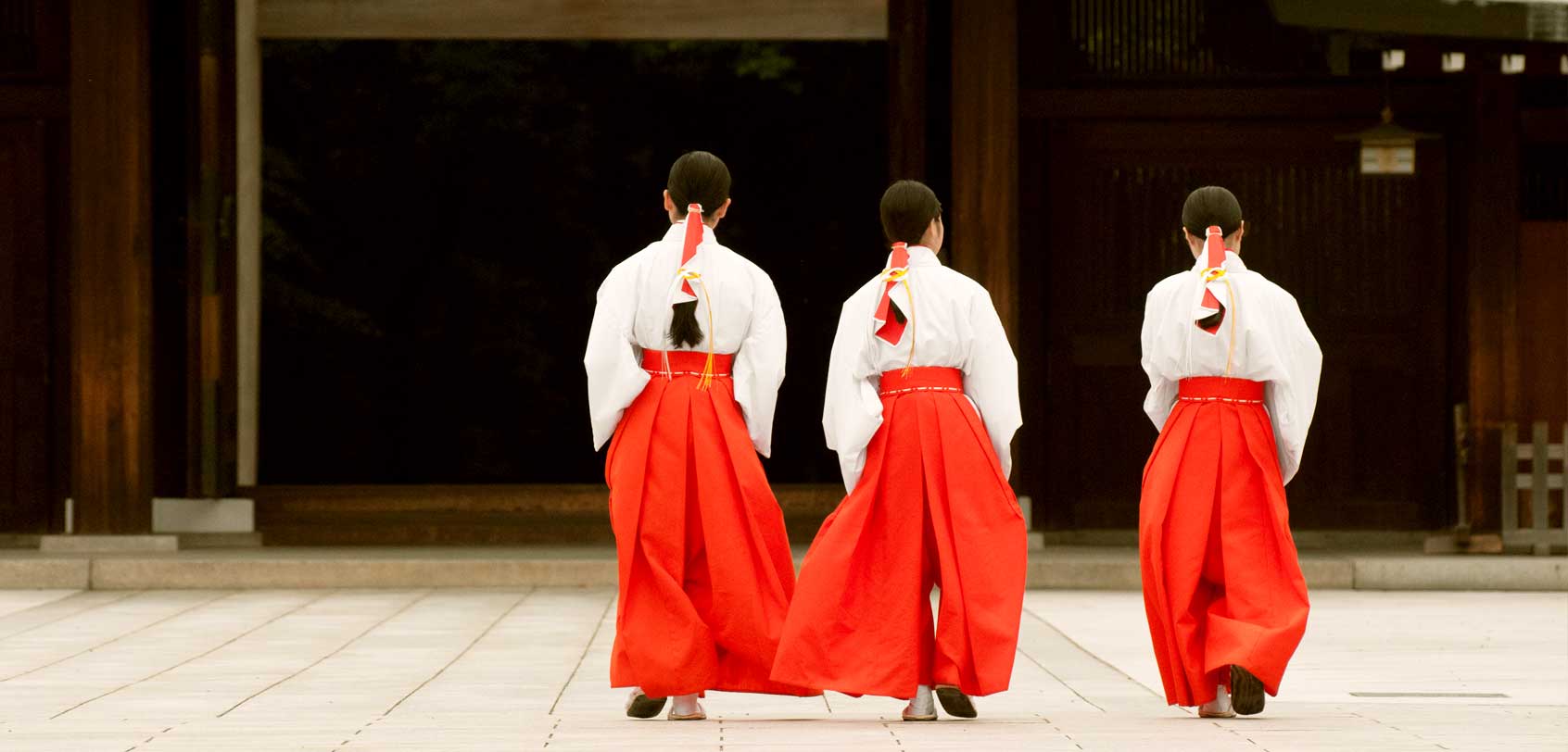
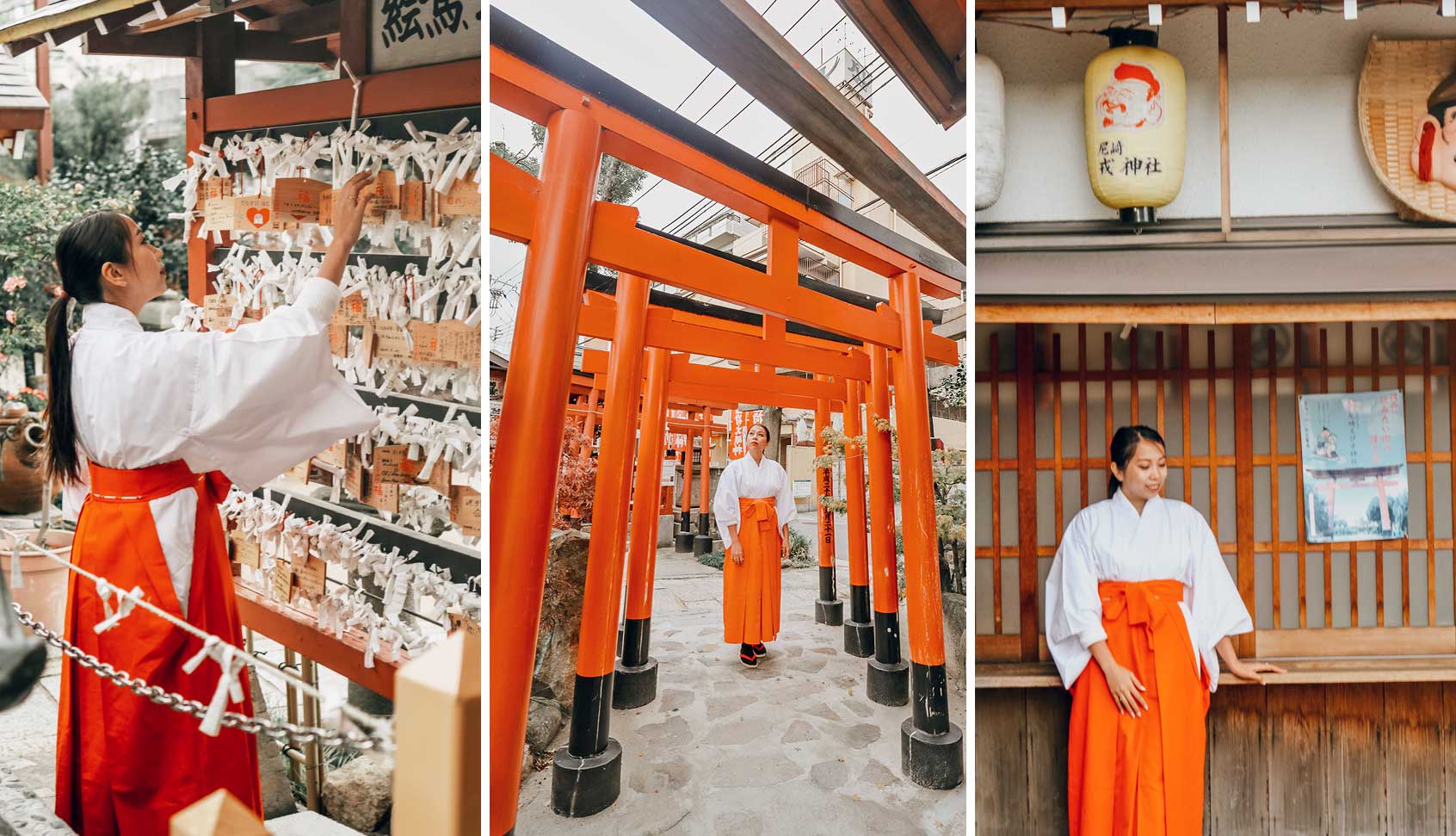

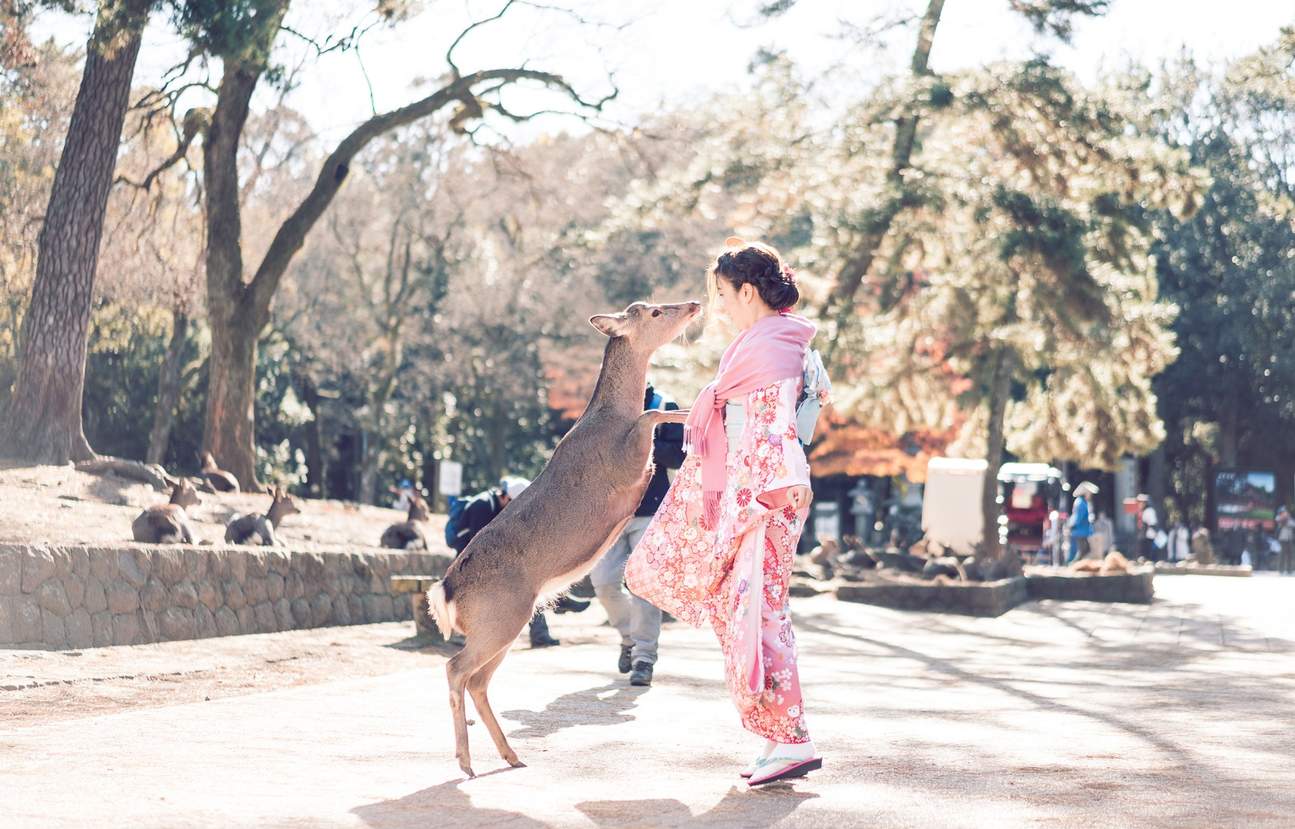.jpg)
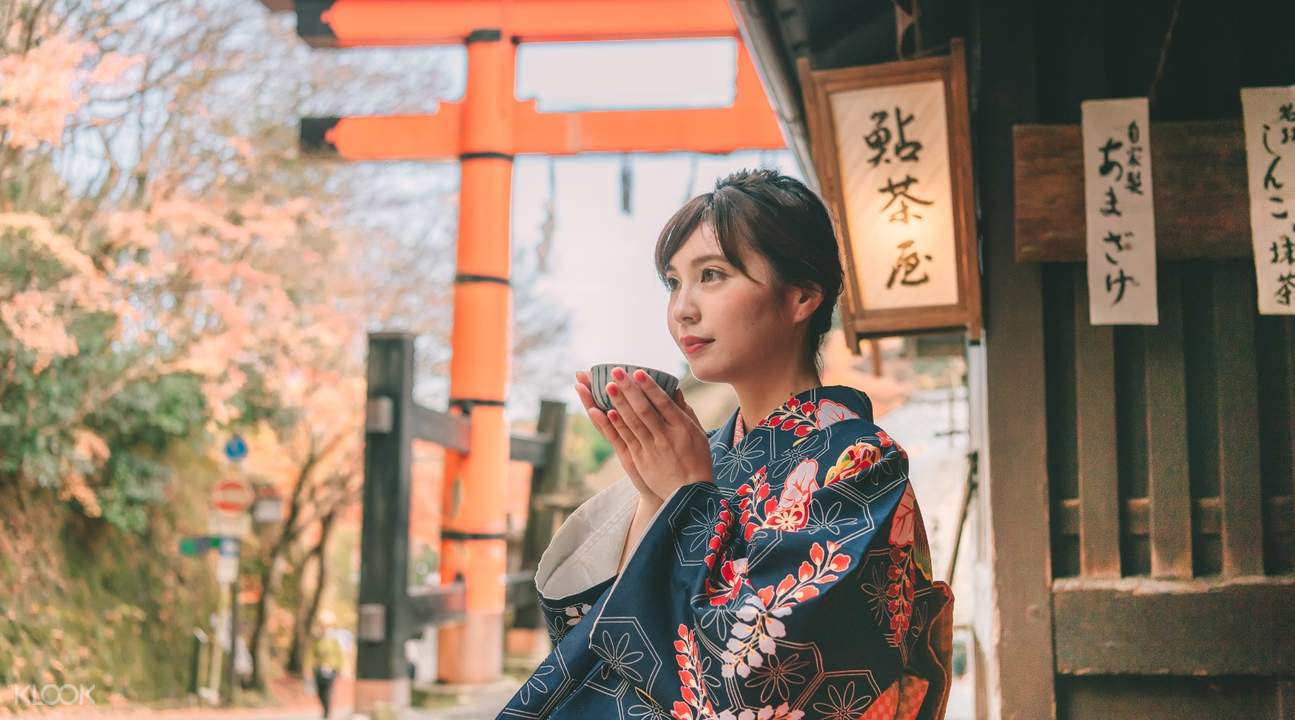
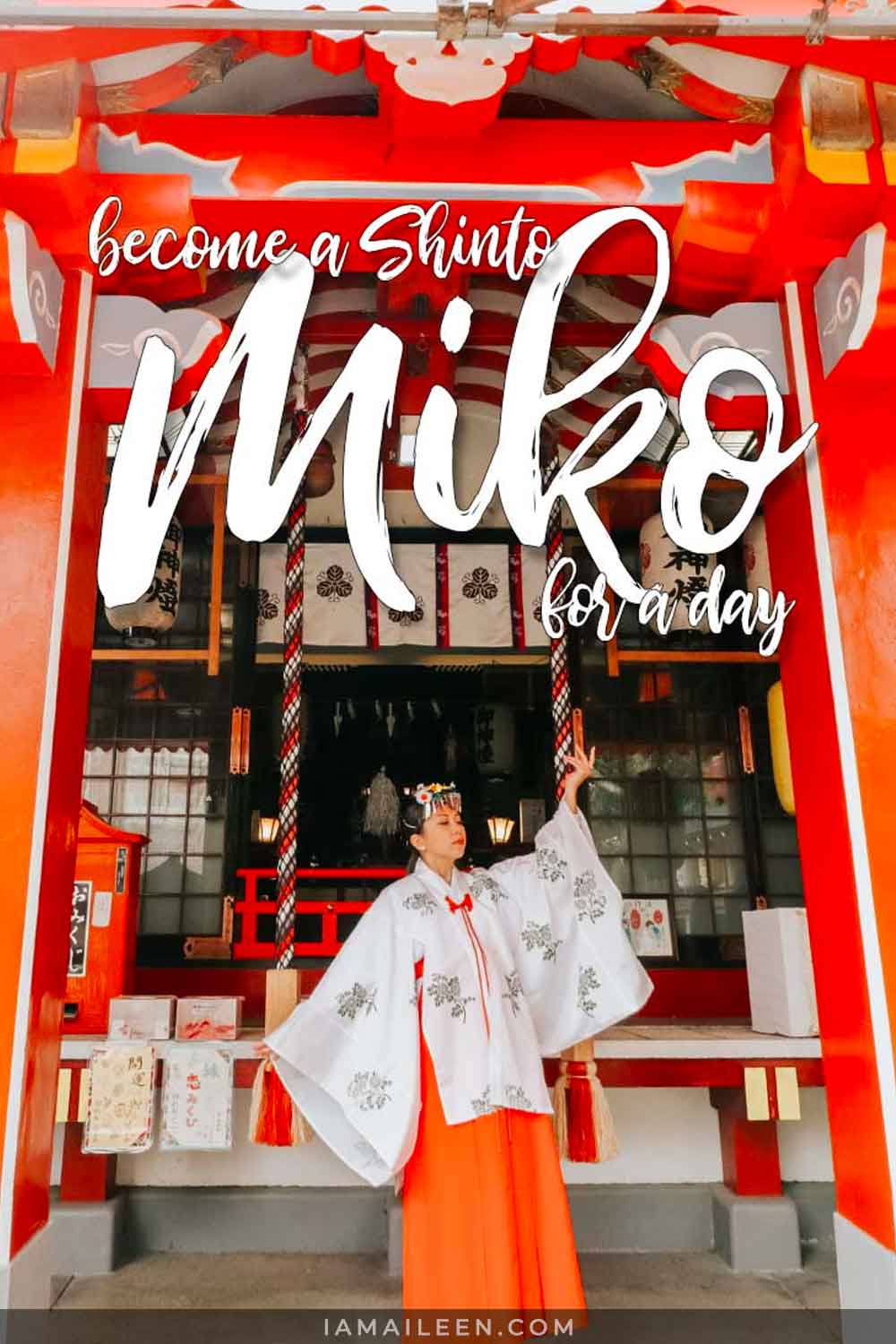


Wow. I am definitely going to share this with a few of my friends. Very cool information!
This is so interesting!
It sure is! I hope you get to try it with friends or family :D